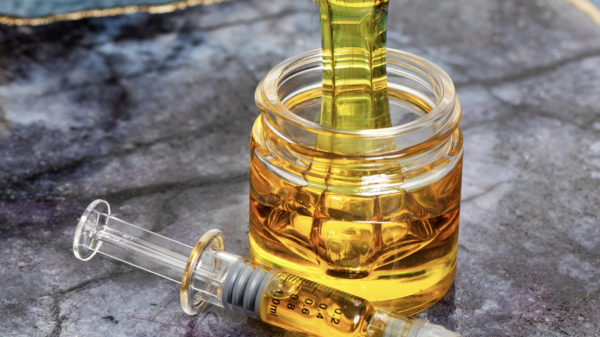Terpenes found in cannabis and other plants can reduce chronic pain by interacting in unique ways with cannabinoid and other receptors in the brain.
That’s according to a study published in the journal Psychopharmacology that found terpenes α-terpineol, ß-caryophyllene, and γ-terpinene activate cannabinoid receptors CB1 and CB2 receptors in ways that reduce chronic pain caused by nerve damage, which is called neuropathic pain.
The terpenes were particularly effective in reversing mechanical allodynia, characterized by extreme sensitivity to touch, as well as thermal hyperalgesia, a high sensitivity to temperature. These are common conditions among people with neuropathic pain.
The results suggest that new, safe painkillers could be made by combining these terpenes at high doses, the scientists explain.
By experimenting on genetically modified mice, researchers at the University of Florida found that ß-caryophyllene helped to mitigate symptoms by activating CB2 receptors. They found that γ-terpinene soothed symptoms by activating CB1 receptors.
Surprisingly, α-terpineol didn’t need to interact with cannabinoid receptors to have positive effects. Researchers say further investigation is required to measure effects on other receptors not looked at in this study.
Read more: Skunk smells in cannabis not caused by terpenes but sulfur-based compounds: study
Read more: Terpenes imitate and enhance cannabinoid activity: study
Other research has shown that substances specifically targetting CB2 receptors don’t produce immediate pain relief, nor decrease body temperature or movement, but ß-caryophyllene produced all three effects. This means the terpene has multiple receptor targets, the researchers explain.
Overall, the terpenes were better at treating thermal hyperalgesia than mechanical allodynia — α-terpineol produced the best results, followed by β-caryophyllene and γ-terpinene.

γ-terpinene gives a citrus smell to cannabis, β-caryophyllene gives it a spicy and peppery scent while α-terpineol gives it a woody smell. Graphic via ‘Evaluation of the terpenes β-caryophyllene, α-terpineol, and γ-terpinene in the mouse chronic constriction injury model of neuropathic pain: possible cannabinoid receptor involvement’
For the study, researchers compared results between 156 genetically modified and 36 non-genetically modified mice. Among the genetically modified mice, 78 of them lacked CB1 receptors while the other 78 lacked CB2 receptors.
Previous research shows that CB1 receptors are abundant in the peripheral and central nervous systems, while CB2 receptors are localized in immune cells and other areas of the brain involved in memory and learning, but primarily the hippocampus
To test the relationship between terpenes and neuropathic pain, researchers performed surgery to create pain in the mice’s extremities.
Read more: Stoner rat study first to closely mimic THC affinity in humans
Read more: Ontario company develops 35% THC cannabis with no smell
After recovering, mice were injected with each terpene, and different pain-inducing tests were done to test the effectiveness of each terpene.
Mice that didn’t have CB2 receptors and were given γ-terpinene showed the same decrease in touch hypersensitivity as those with the receptor and as the non-genetically modified mice.
“Thus, it appears that CB1R may play a differential role in the pharmacological activity of γ-terpinene, likely dependent on the anatomical site-specific pool of receptors that mediate a given physiological process,” reads the study.
Follow Natalia Buendia Calvillo on Twitter
natalia@mugglehead.com















João Renato Negromonte
December 8, 2021 at 12:41 pm
Where is the study?